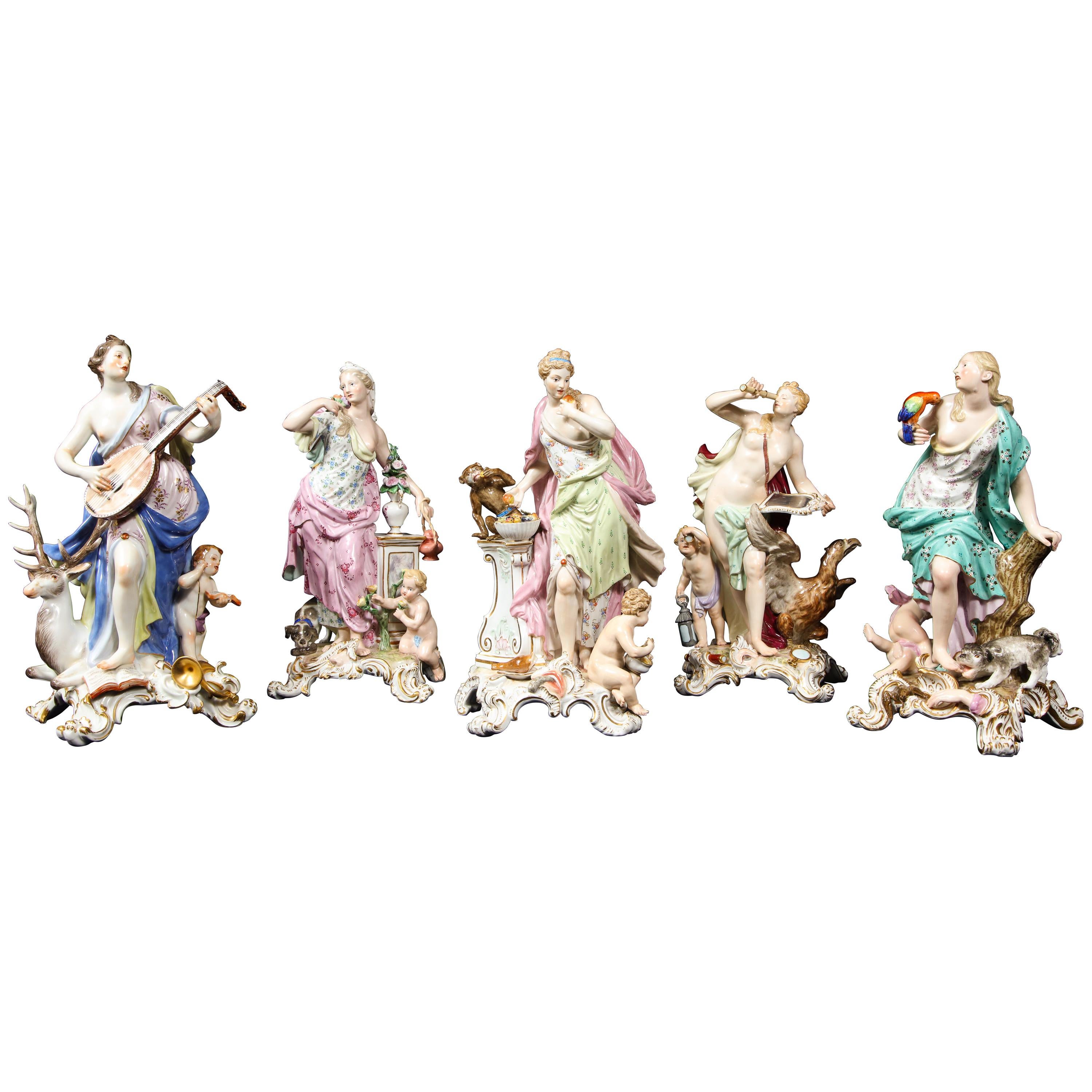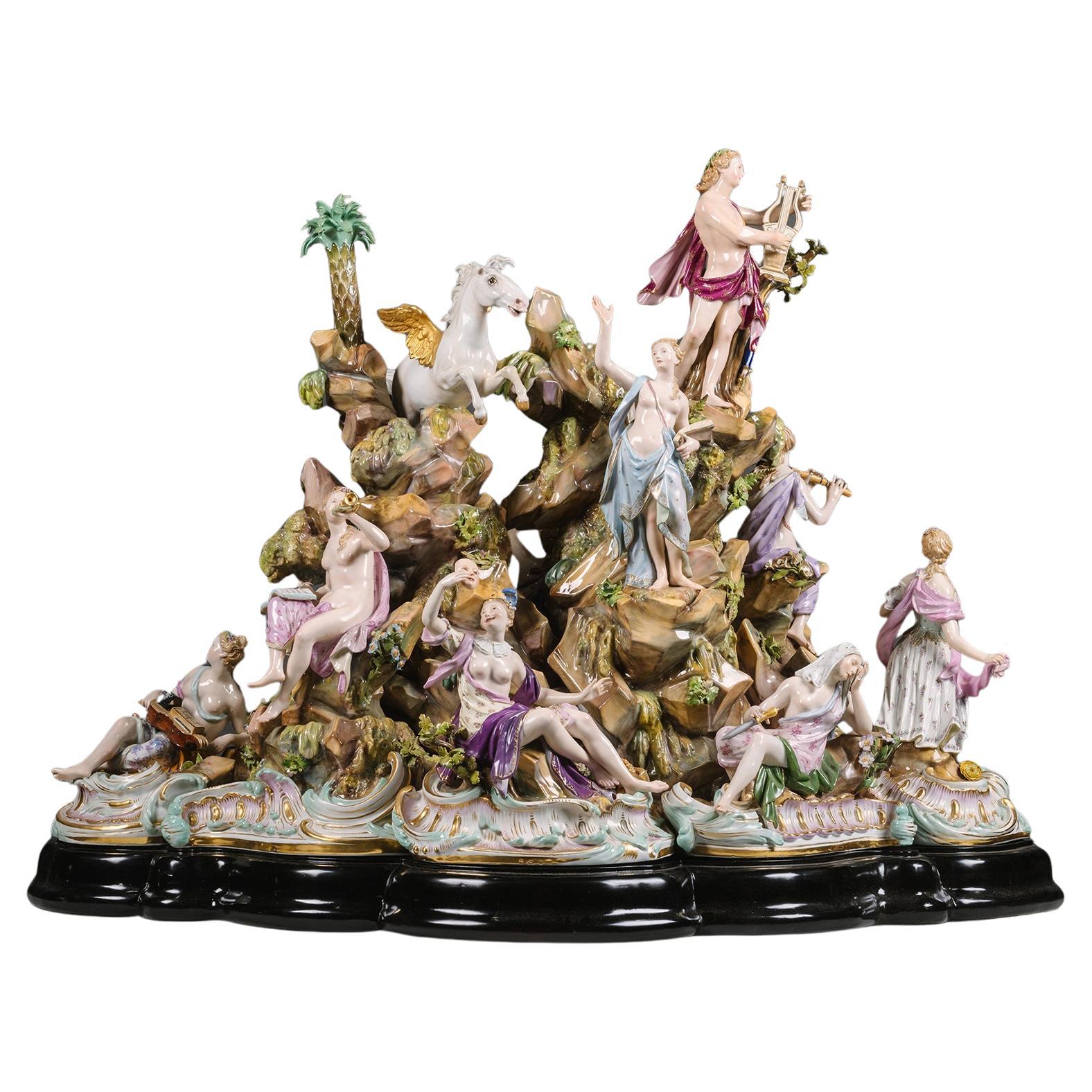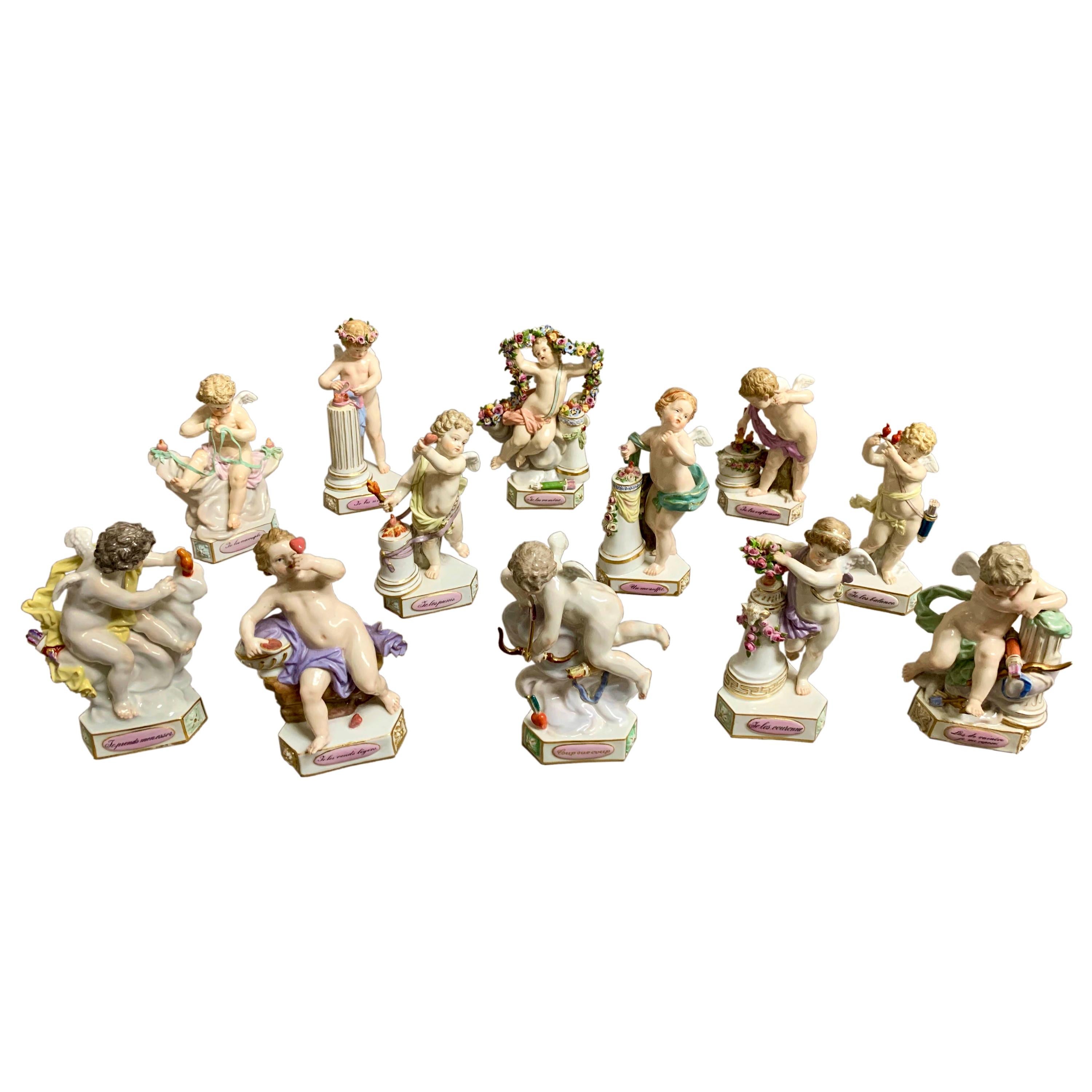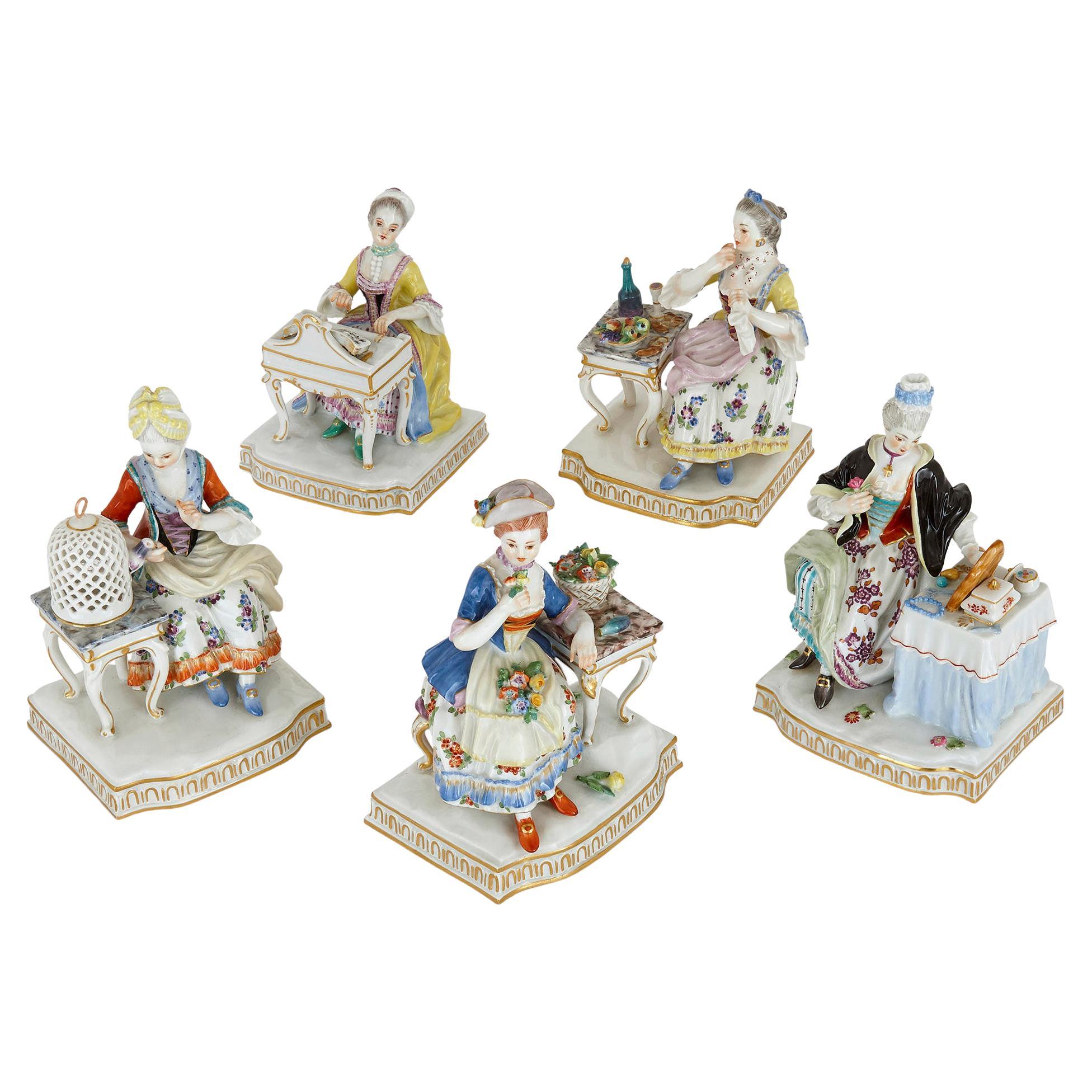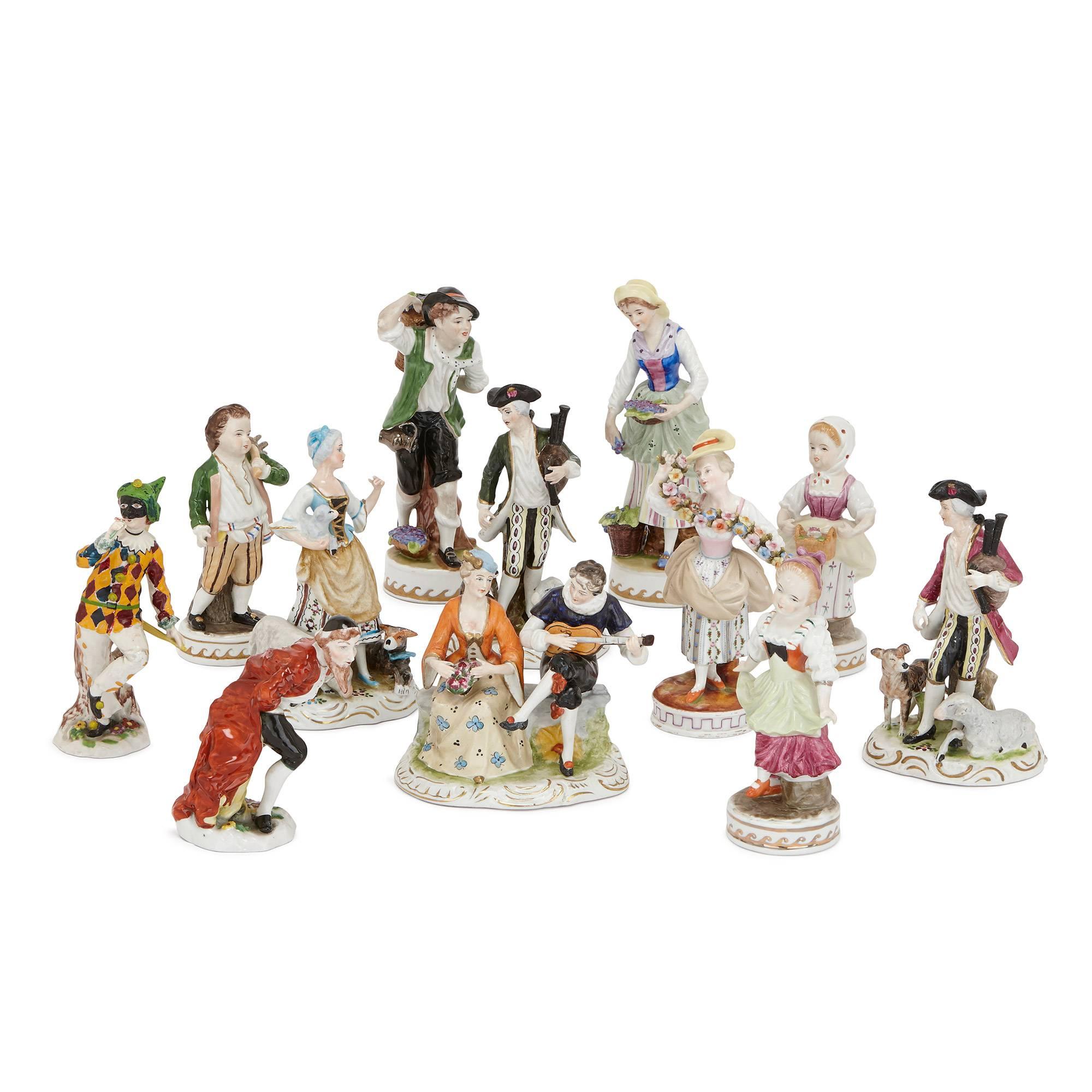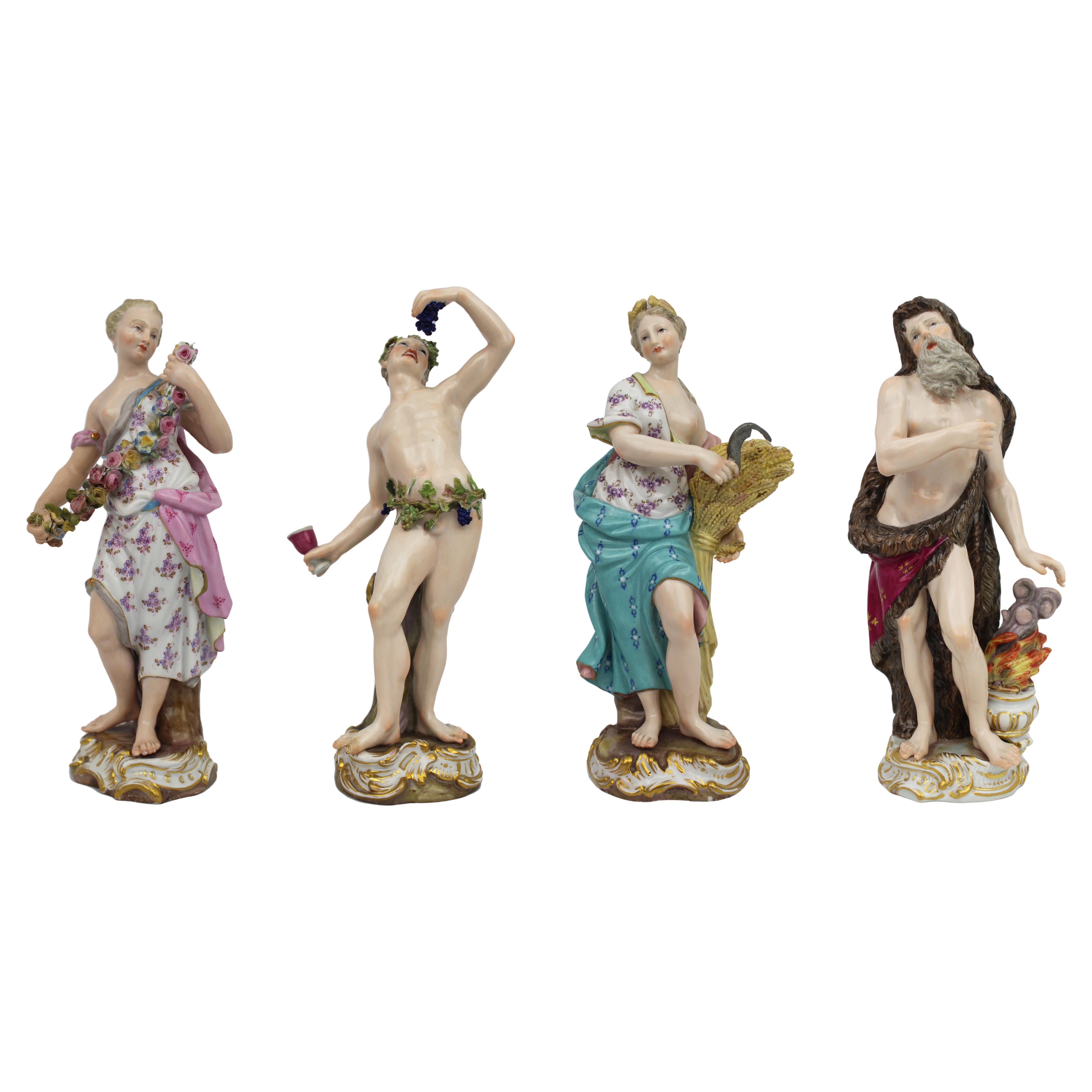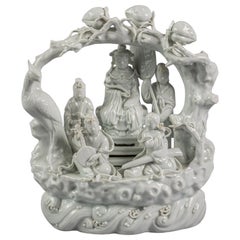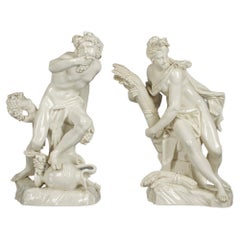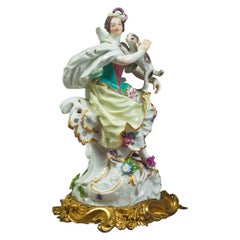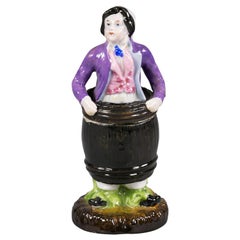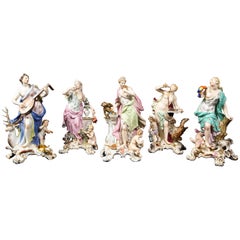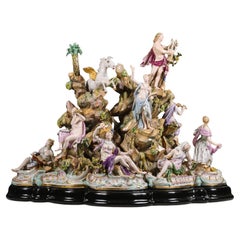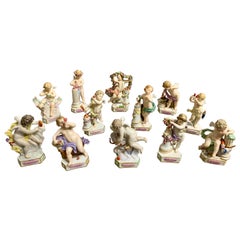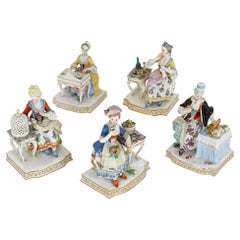Items Similar to Rare Assembled Set of Six German Porcelain Mythological Deities, Meissen
Want more images or videos?
Request additional images or videos from the seller
1 of 9
Rare Assembled Set of Six German Porcelain Mythological Deities, Meissen
$45,000
£33,979.17
€39,422.82
CA$63,239.14
A$70,457.33
CHF 36,782.06
MX$855,445.83
NOK 462,326.46
SEK 437,010.82
DKK 294,286.61
About the Item
Attributed to Johann Friedrich Eberlein, circa 1741. One of Hercules, Diana, Minerva, two Juno and one bacchanalian figure. Literature: Rainer Rückert's Meissener Porzellan (1964), pl. 238, no. 979 and W. B. Honey, Dresden China (1946), pl. XLV (c) - a figure of Juno from the collection of Gustav von Klemperer.
- Dimensions:Height: 12.5 in (31.75 cm)Width: 2.75 in (6.99 cm)Depth: 2.75 in (6.99 cm)
- Materials and Techniques:
- Place of Origin:
- Period:
- Date of Manufacture:18th Century
- Condition:
- Seller Location:New York, NY
- Reference Number:Seller: E3106/E59891stDibs: LU1468218362872
About the Seller
5.0
Recognized Seller
These prestigious sellers are industry leaders and represent the highest echelon for item quality and design.
Established in 1940
1stDibs seller since 2015
191 sales on 1stDibs
Typical response time: 16 hours
- ShippingRetrieving quote...Shipping from: New York, NY
- Return Policy
Authenticity Guarantee
In the unlikely event there’s an issue with an item’s authenticity, contact us within 1 year for a full refund. DetailsMoney-Back Guarantee
If your item is not as described, is damaged in transit, or does not arrive, contact us within 7 days for a full refund. Details24-Hour Cancellation
You have a 24-hour grace period in which to reconsider your purchase, with no questions asked.Vetted Professional Sellers
Our world-class sellers must adhere to strict standards for service and quality, maintaining the integrity of our listings.Price-Match Guarantee
If you find that a seller listed the same item for a lower price elsewhere, we’ll match it.Trusted Global Delivery
Our best-in-class carrier network provides specialized shipping options worldwide, including custom delivery.More From This Seller
View AllLarge Chinese Porcelain Blanc De Chine Figural Group, Circa 1880
Located in New York, NY
Depicting a seated Guanyin surrounded by two attendants and two musicians all set onto a gnarled boat or raft above turbulent waves, a branch of blossom...
Category
Antique 1880s Chinese Figurative Sculptures
Materials
Porcelain
Pair of German Porcelain Figures of Bacchus and Ceres, Nymphenburg, circa 1900
Located in New York, NY
Ceres is draped in a cloth resting on a tree stump while holding a sheaf of grain. Bacchus, the god of wine, also rests on a tree stump while holding up a cluster of grapes.
Category
Antique Early 1900s German Figurative Sculptures
Materials
Porcelain
Bronze Mounted German Porcelain Figure of a Lady with Dog, Meissen, circa 1750
Located in New York, NY
Marked Meissen. With 18th century French gilt bronze mounts. Modeled by Friederich Elias Meyer.
Category
Antique 1750s German Figurative Sculptures
Materials
Porcelain
German Porcelain Figural Container, circa 1870
Located in New York, NY
In the form of a man in a barrel.
Category
Antique 1870s German Figurative Sculptures
Materials
Porcelain
English Pottery, Charles Vyse, 'Tug of War, ' 1924
Located in New York, NY
English pottery, Charles Vyse, 'Tug of War,' 1924.
Category
Early 20th Century English Figurative Sculptures
English Porcelain Figural Double Coupe Centerpiece, Royal Worcester, circa 1890
Located in New York, NY
With impressed Worcester mark and puce mark. Depicting two colorful figures reclining against a tree stump, the two coupes with molded basket weave exteriors.
Category
Antique 1890s British Figurative Sculptures
Materials
Porcelain
You May Also Like
Set of 5 Meissen Figures Emblematic of the Senses by J.J. Kändler and Eberlein
By Meissen Porcelain
Located in New York, NY
A magnificent and fully complete set of 5 Meissen figures emblematic of the senses: Hearing, smell, touch, taste, and sight, Modeled by J.J. Kändler and J.F. Eberlein. These figures ...
Category
Antique 1860s German Rococo Figurative Sculptures
Materials
Porcelain
A Monumental Meissen Porcelain Figural Group of Mount Parnassus
By Meissen Porcelain
Located in Brighton, West Sussex
A Monumental Meissen Porcelain Figural Group of Apollo and the Nine Muses on Mount Parnassus.
Comprised of sixteen interlocking parts. Apollo standing holding a lyre and with Pegasus besides a tree, atop a rocky outcrop detailed with foliage and waterfalls above nine goddesses:
Calliope, seated and shown writing, representing eloquence and epic poetry.
Clio, seated with an open book and blowing a trumpet, representing history.
Erato, seated and holding a kithara, representing science and the arts
Euterpe, seated and holding a flute, representing music.
Melpomene, seated holding a knife and with one hand to her head, representing tragedy.
Thalia, seated and holding aloft mask, representing comedy and idyllic poetry.
Urania, seated with telescope and globe, representing astronomy and astrology,
Polyhymnia, standing with one hand raised and holding a book, representing sacred poetry.
Terpsichore, standing, representing dance.
Each piece exceptionally finely detailed and painted. The base portions with rocaille edges. On a later black polished wooden base.
Multiple blue crossed swords marks. Each piece titled to underside.
German, Circa 1880.
Mount Parnassus, is a spur of the Pindus Mountains in central Greece and was sacred to the ancient Greeks and in mythology to Apollo, the god of music and poetry and of the Sun and light. Mount Parnassus the mythical centre of poetry, music, and learning in ancient Greece was a popular theme in Barqoue and Rococo art, often substitutable with Athena’s arrival at Mount Helicon from the fifth book of Ovid’s “Metamorphoses”, where she asks the Muses to show her the new spring which gushed forth from the spot where Pegasus “with his hoof of horn opened the earth” (V, 250-260).
Here, the mountain, formed from rugged rock cliffs, culminates in a plateau on which the youthful Apollo stands and plays the lyre. The Castalian spring flows from beneath Pegasus’ hoof, representing the source of inspiration and attracting the nine muses, who embody the arts and inspire creation through song, music, and dance.
Mount Parnassus was created at the Meissen porcelain manufactory as a table centrepiece and an earlier version, apparently with only five muses, is listed in the inventory of the pastry shop of the Meissen manufactory manager and cabinet minister Heinrich Graf Brühl in 1753. The storage in the pastry shop of approximately 3,000 objects and dishes, including many individual parts for centrepieces, is related to their function as table decorations, replacing decorations previously made by the confectioner from perishable materials such as sugar or wax.
The purpose of this table decoration was as a feast for the eyes to accompany the feast of the banquet. The sculptural figurines often depicted a particular theme, with characters drawn from theatre and opera, from classical mythology or pastoral idylls. Allegories and mythological themes, such as the glorification of fine arts, were also popular. Stylistically, Mount Parnassus fits Kändler’s style of the 1740s, and was sold by Brühl in 1762 to Frederick the Great of Prussia who used mythology as a means of self-expression and had already ordered individual figures of Apollo and the Muses as table decorations in 1744. Today it is in the Museum of Applied Arts, Frankfurt (inv. no. M.L. 41). There is another version of Mount Parnassus, from the collection of Prince Alexander Dolgorukoff, in the Hermitage in Saint Petersburg.
The present version dates to the second half of the nineteenth century when there was a great revival of Kändler rococo figurines which were reissued and a “Second Rococo”. Another nineteenth century example is in the collection of the Museo Francesco Borgogna, Italy (inv. 1906, XIII, 19-20). These nineteenth century versions were made by the Meissen factory using Kändler's period models. It is recorded that a new version of Mount Parnassus, dating to the 1880s, was part of the Royal Porcelain collection in Dresden:
'In the porcelain collection there is a new version from the 1880s based on the old models, the largest group of this genre, the Parnassus, which shows the named muses all around on the lower part of the rock, each practising their own art, while on the top there is Apollo with the lyre and next to it the Castalian spring rises from the hoofbeat of Pegasus. Each figure is executed individually with its rocky background, and all the pieces are then fitted together, as we have already seen in his earlier, larger compositions. The rock pieces are finished off like a pedestal at the bottom with Rococo ornaments.' (Jean Louis Sponsel, Kabinettstücke der Meissner Porzellan-manufaktur von Johann Joachim Kändler, Leipzig, 1900, pp. 203-204).
Kunst und kunsthandwerk; monatsschrift herausgegeben vom Österreichischen museum fuer kunst und industrie, Vienna, 1894, v.7 pt.1, p.133.
Kari Berling, Das Meißner Porzellan und seine Geschichte. Leipzig 1900, S. 99, 187-200.
Helmuth Gröger, Johann Joachim Kaendler. Dresden, 1956.
Peter W Meister, Franz Adrian Dreier, Figürliche Keramik aus zwei Jahrtausenden. Kat Museum für Kunsthandwerk, Frankfurt. Frankfurt 1964, Nr. 90.
Rainer Rückert, Meißener Porzellan, 1710-1810. Kat. Ausst. Bayerisches Nationalmuseum München. München 1966.
Stefan Bursche, Tafelzier des Barock. München 1974, Abb. 300.
"Tafelaufsatz, Der Parnass", Auswahlkatalog, Museum für Kunsthandwerk (Frankfurt am Main, Germany), 1987, pp. 86-87.
Alfred Ziffer, ‘Meissener Porzellanplastik für fürstliches Interieur und Zeremoniell’, Keramos, Issue 241/242, pp. 29–52.
MEISSEN
The production of Meissen porcelain began in 1710 at the manufactory at Meissen...
Category
Antique 19th Century German Rococo Porcelain
Materials
Porcelain
Set of 12 Meissen "Motto Children" Figures
By Meissen Porcelain
Located in Los Angeles, CA
Antique Meissen complete 12 piece set - "Motto Children" after models by Acier (after drawings by Schoenau).
Each figure with an inscribed motto in French on the base that reads as ...
Category
Antique Late 19th Century German Figurative Sculptures
Materials
Porcelain
$26,500 / set
Set of Five Allegorical Porcelain Sculptures by Meissen
By Meissen Porcelain
Located in London, GB
Set of five allegorical porcelain sculptures by Meissen
German, c. 1975
Measures: Height 15cm, width 10cm, depth 8.5cm
The five figures in this set are allegorical of the senses...
Category
Vintage 1970s German Rococo Figurative Sculptures
Materials
Porcelain
$13,227 Sale Price / set
20% Off
Set of 12 Dresden Porcelain Figures and Groups
By Dresden Porcelain
Located in London, GB
This charming set comprises twelve decorated figures and figural groups that one might encounter on a stroll through an 18th century town. The set includes animals, musicians, dancer...
Category
Early 20th Century German Rococo Figurative Sculptures
Materials
Porcelain
$8,267 Sale Price / set
20% Off
Set of 19th c. Meissen Four Seasons Figurines
By Meissen Porcelain
Located in Worcester, GB
19th Century Meissen Porcelain Figurines – Set of the Four Seasons
A finely modelled set of four Meissen porcelain figures representing the Four Seasons, produced in the 19th centur...
Category
Antique 19th Century German Ceramics
Materials
Porcelain
$4,987 / set
